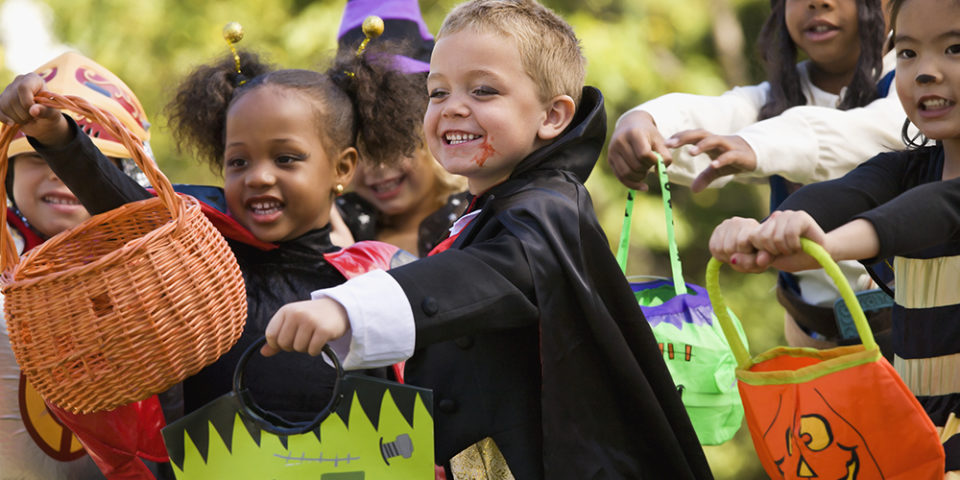Tips for keeping children safe and healthy this Halloween
Spooky decorations are popping up in neighborhoods, reminding us that Halloween is just around the corner. While kids love the chance to dress up in fun costumes and collect candy on October 31, parents may worry about scary things such as falls, tummy aches and traffic dangers. Rahul Kataria, MD, offered parents some tips for a fun but safe Halloween.
Trick-or-treating
- Make sure your child eats dinner before setting out. Children will be less likely to eat too much candy and will have more energy for the fun ahead.
- An adult should accompany children under age 12.
- Children ages 13 to 15 should travel in groups of at least three.
- Trick-or-treat in your neighborhood, where you know the neighbors, and consider going during daylight hours.
- Only visit homes with decorations, outdoor lighting and porch lights illuminated.
- Teach your children your phone number. An older child can carry a cellphone to check in while away from home but remind the child about the dangers of distracted walking.
- Instruct children never to enter a home or apartment building unless accompanied by an adult.
- Remind children never to accept rides from strangers.
- Drivers should go slowly all evening. Adult Halloween party goers should have a designated driver.
- Children should be educated to obey all traffic rules.
Candy
- Insist that children show you all their goodies before they sample them. Inspect candy for tampering. Never eat fruit, unwrapped items, or candy not in its original wrapper.
- Do not give gum and hard candy to young children as it can pose a choking risk.
- A few days after Halloween, put the candy out of sight and out of mind. You can ration out the treats later.
- If you want to provide non-candy alternatives for trick-or-treaters, consider packages of crackers, single-serve boxes of cereal, granola bars, packaged fruit rolls, mini-boxes of raisins and single-serve bags of chips or popcorn. Non-edible treats including pencils, stickers and erasers also are good alternatives. Get some additional tips about healthy treats here.
Costumes
- Have children wear costumes with light, bright colors that will be clearly visible to motorists; attach reflective tape, glow sticks or glow-in-the-dark accessories to increase visibility at night.
- Make sure that costumes – including wigs and beards – are flame resistant, and remind children to stay away from open flames, candles and jack-o’-lanterns.
- Do not use masks. They make it hard for children to see what’s around them, including cars. Try a hypoallergenic, non-toxic make-up kit instead. Make sure to remove make-up before bedtime to prevent possible skin and eye irritation.
- Avoid costumes with big, baggy sleeves; billowing skirts; or long, dragging hems that could cause someone to trip. High heels or oversized shoes also can cause accidents.
- Dress your child for the weather. Add layers if needed. Cold weather or water absorbent materials in the rain can be very uncomfortable.
- Make sure that swords, knives, and other props are made of flexible material and do not have sharp edges.
- Attach your child’s name, phone number (including area code) and address inside your child’s clothing in case the child gets separated from adults.
“Halloween doesn’t have to be scary,” Dr. Kataria said. “It’s a great time to get some exercise, have some family bonding time, and teach kids about making healthy choices.”
Find the care you need, close to home
Our primary care physicians provide well visits and everyday care when you need it with compassion and expertise.
Find Primary Care Near You

